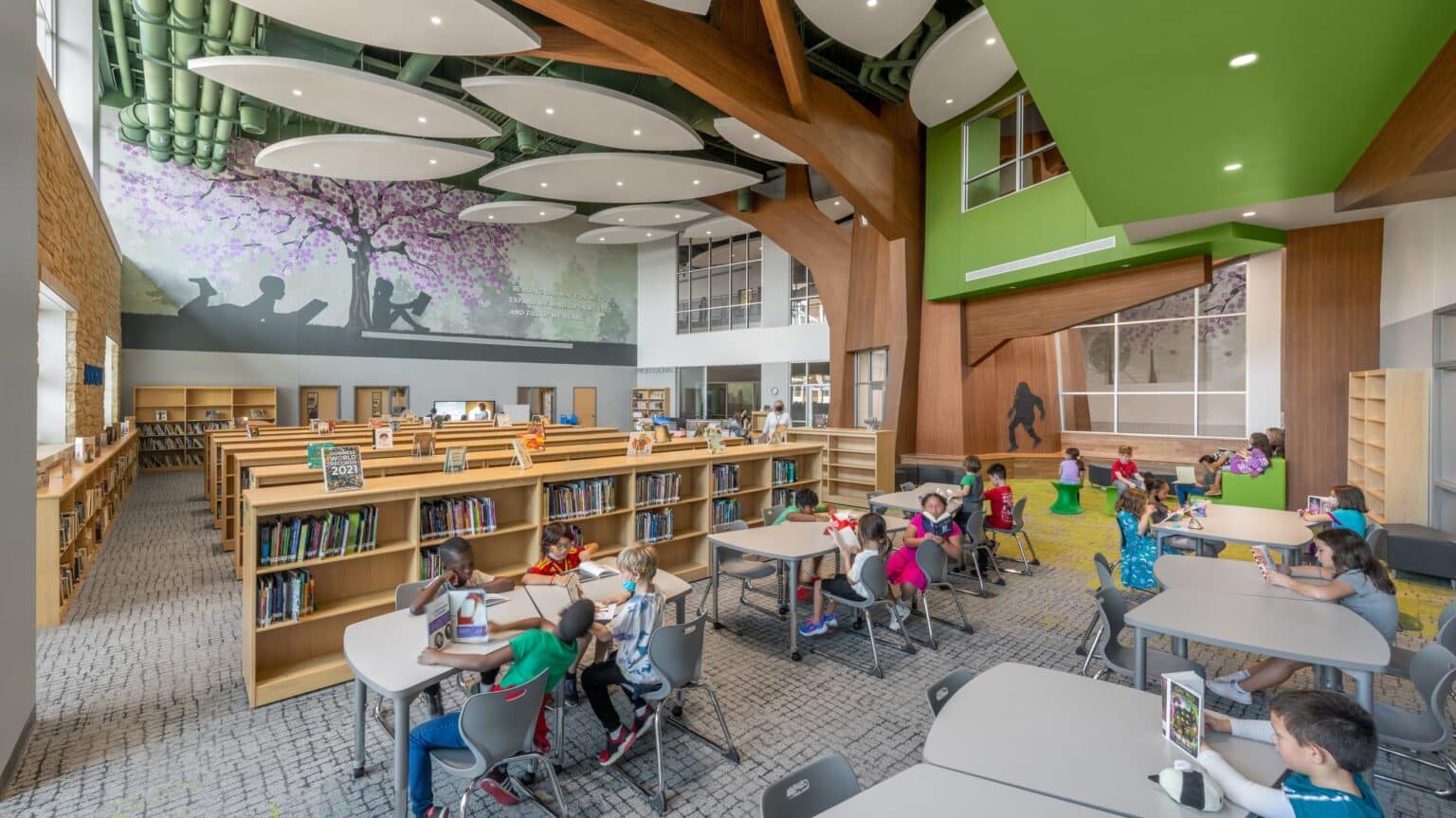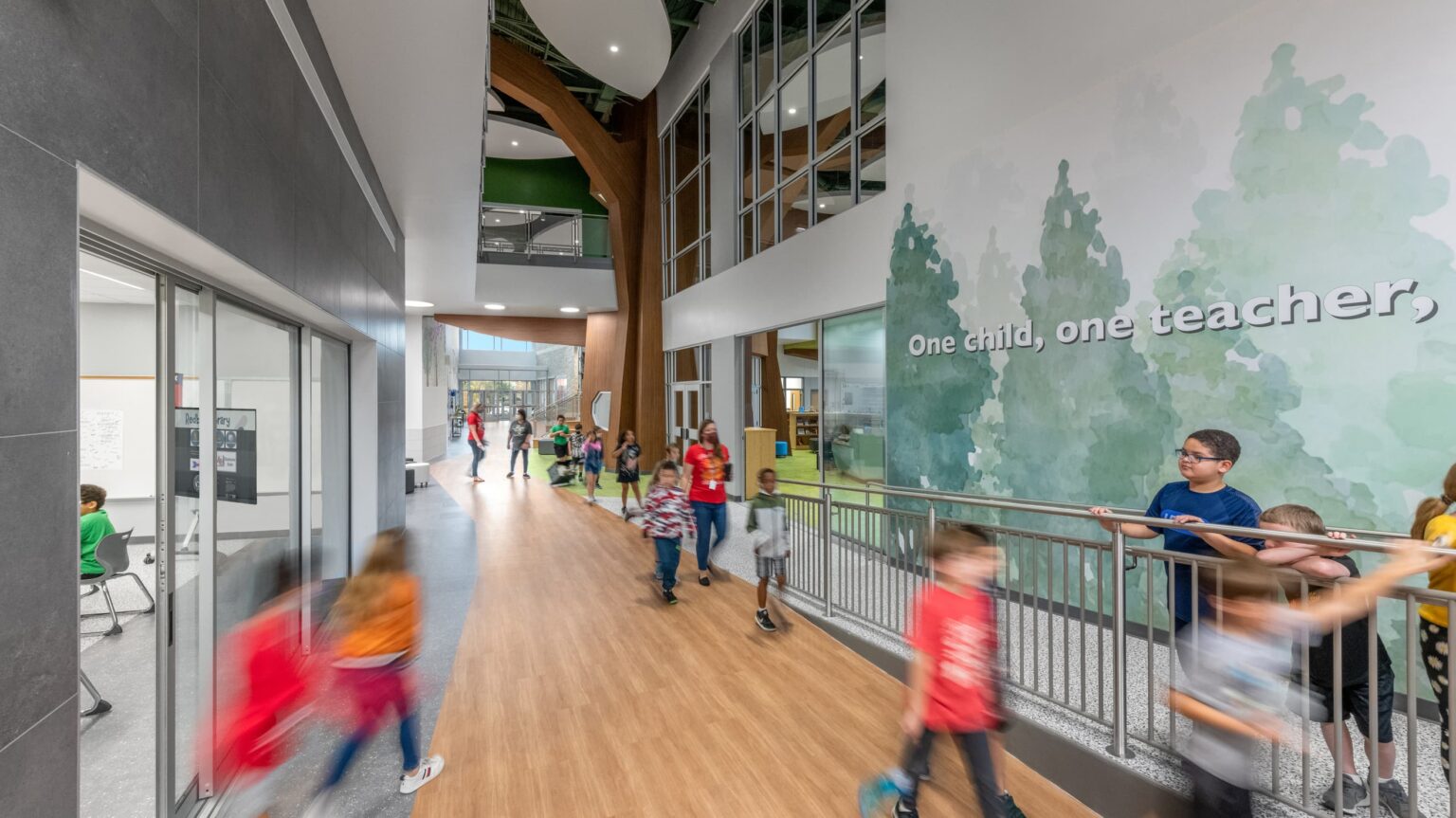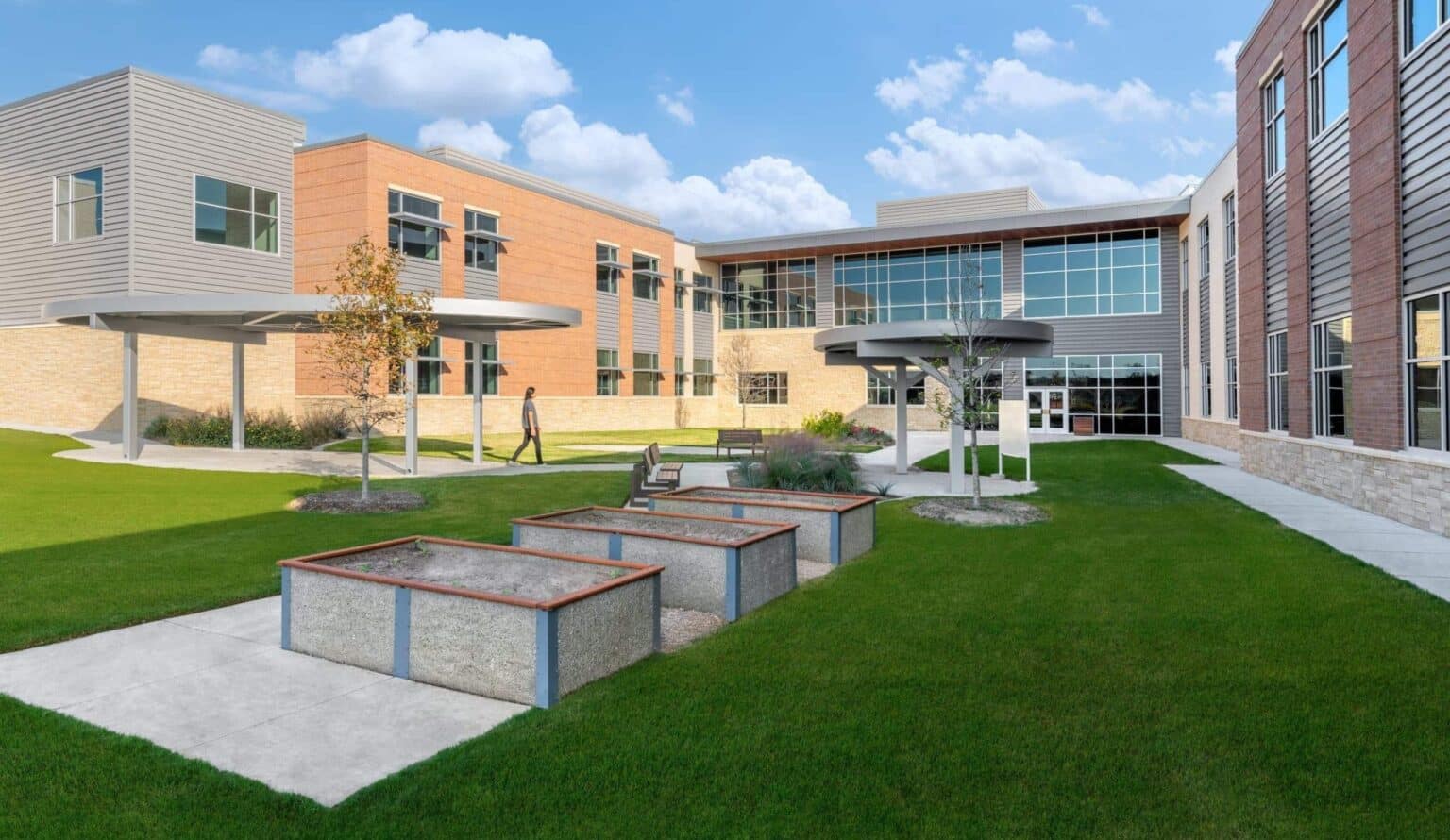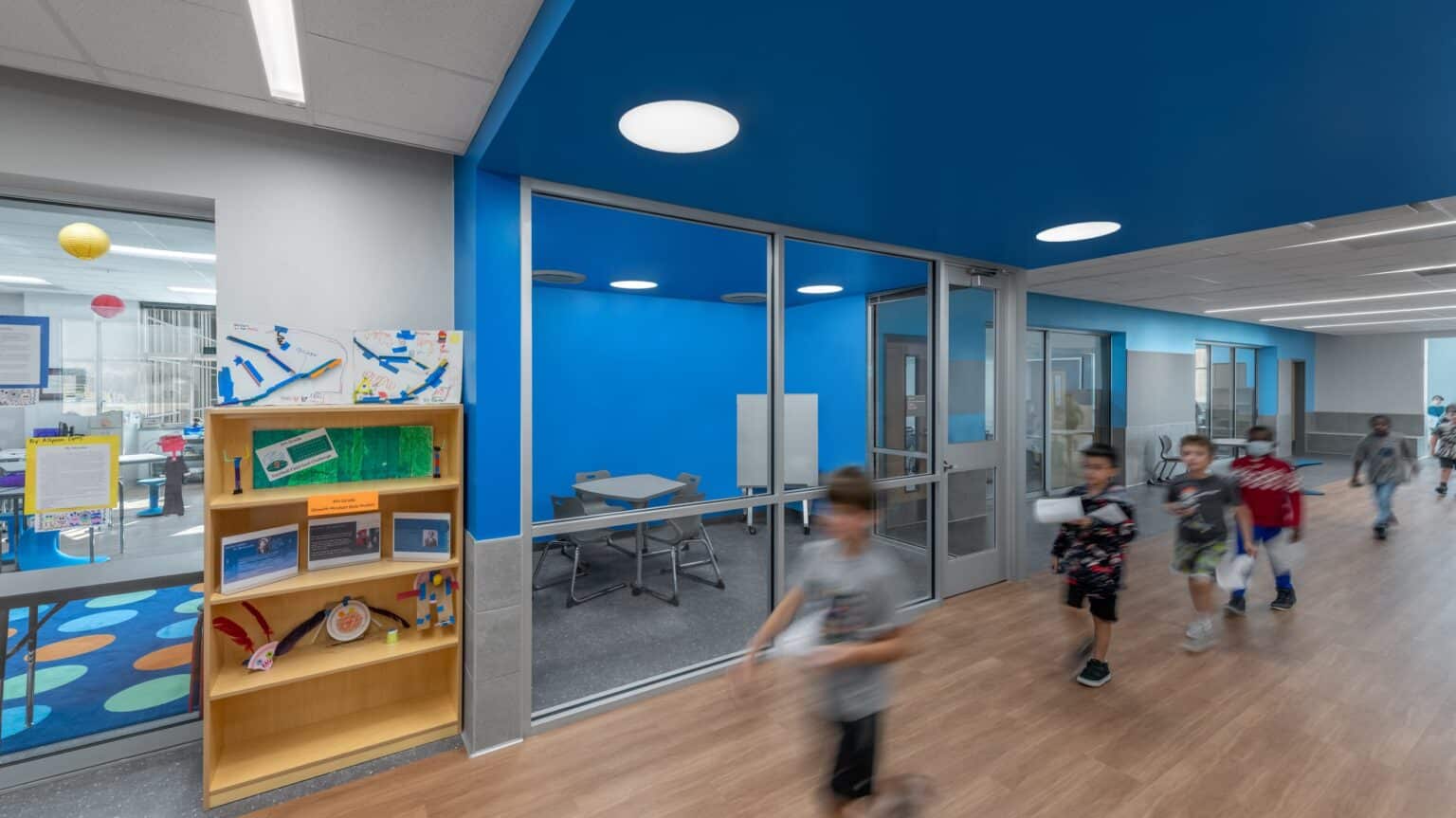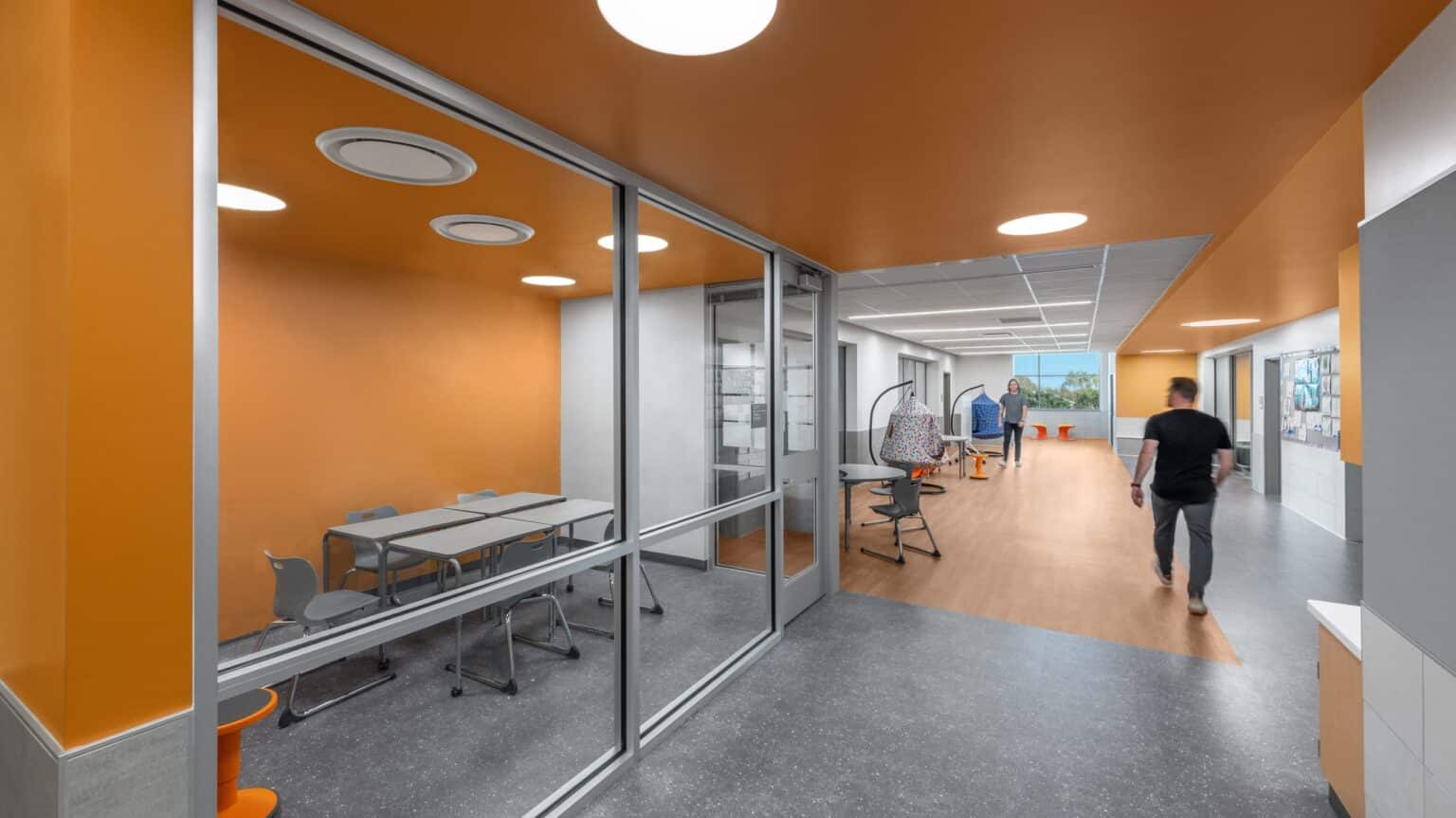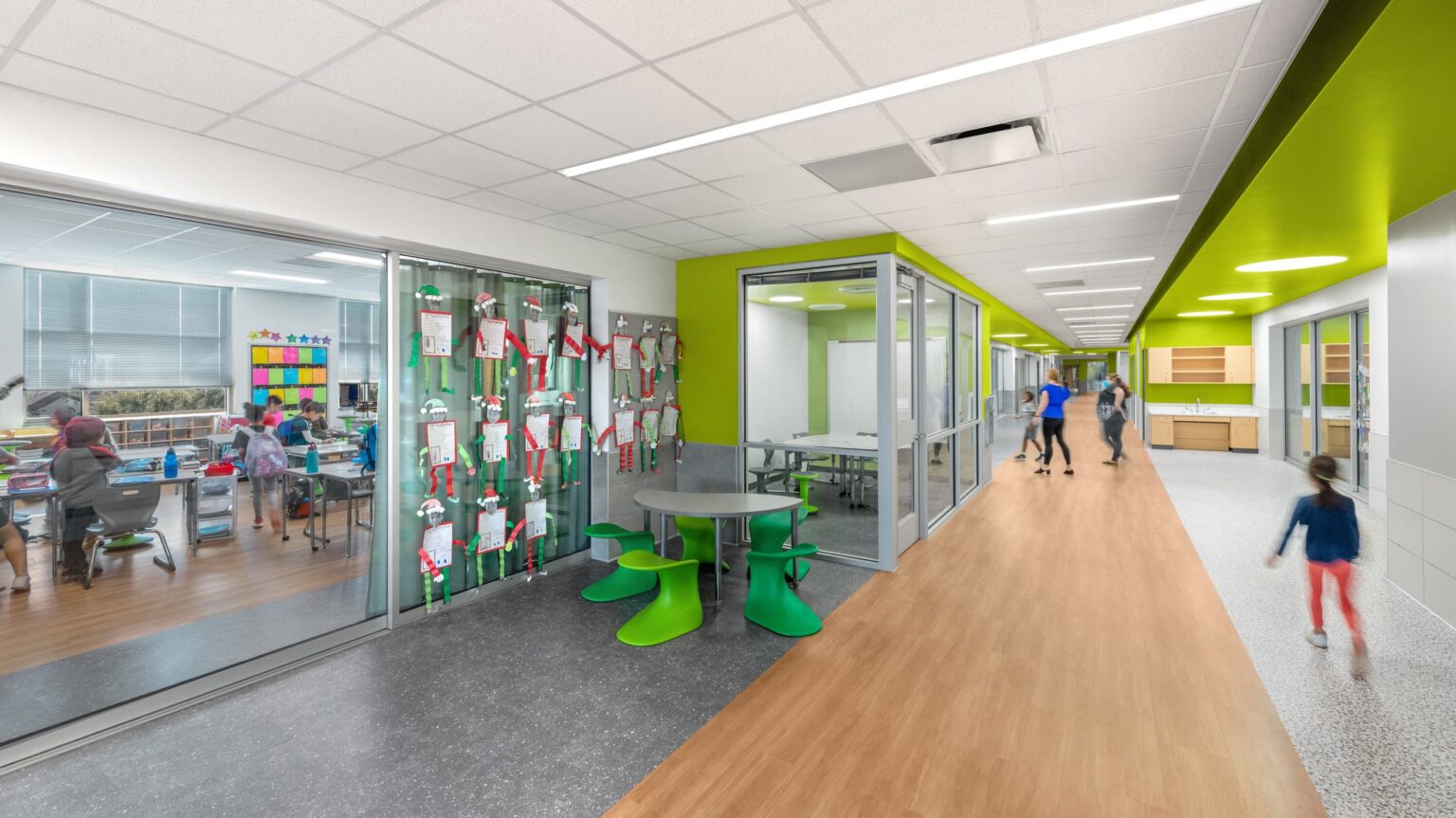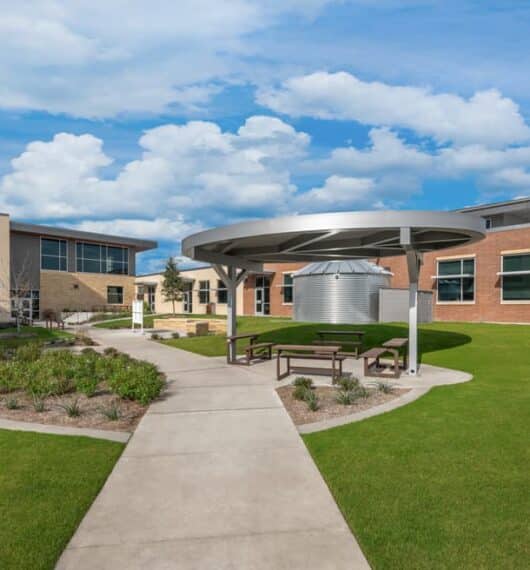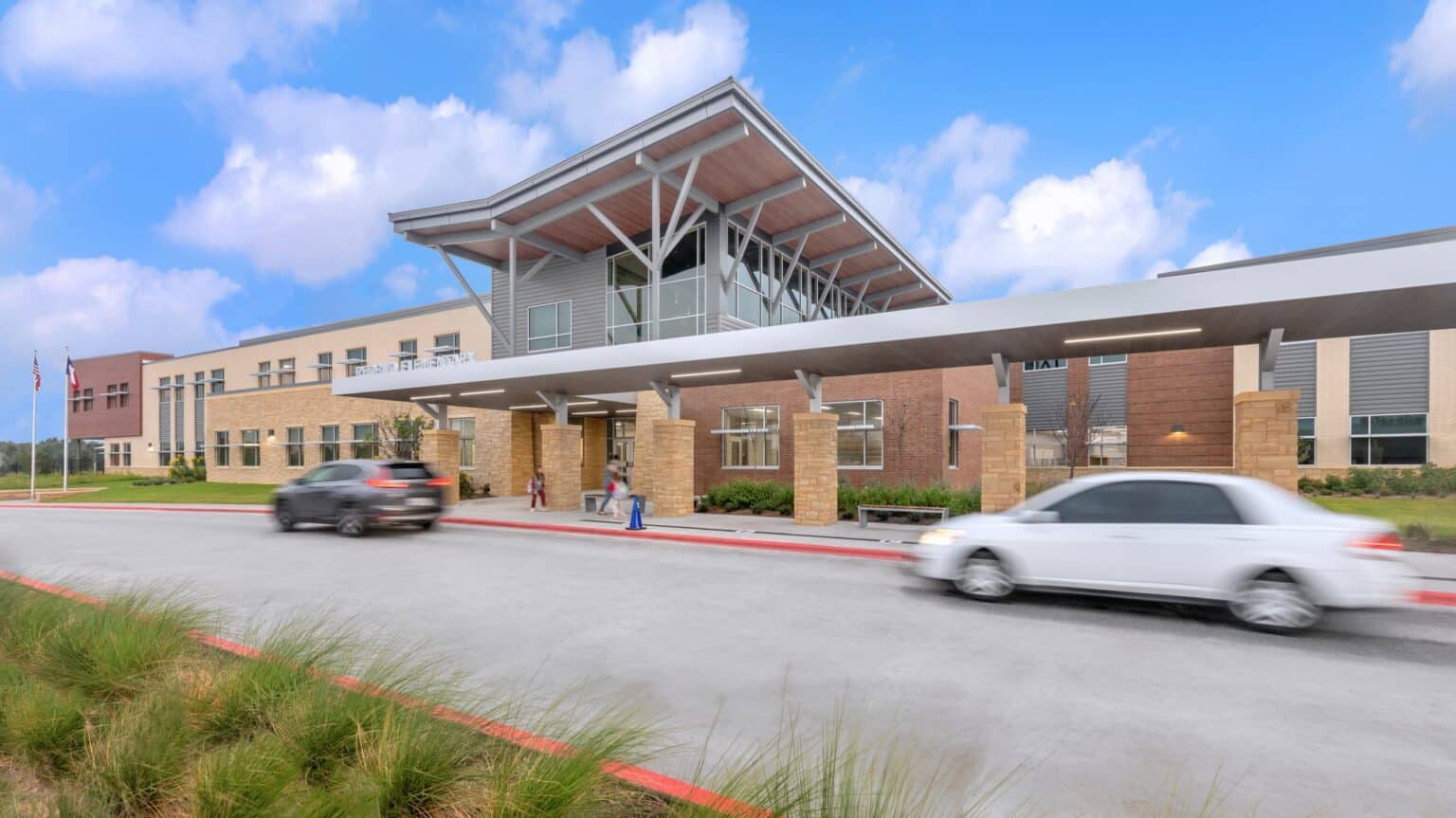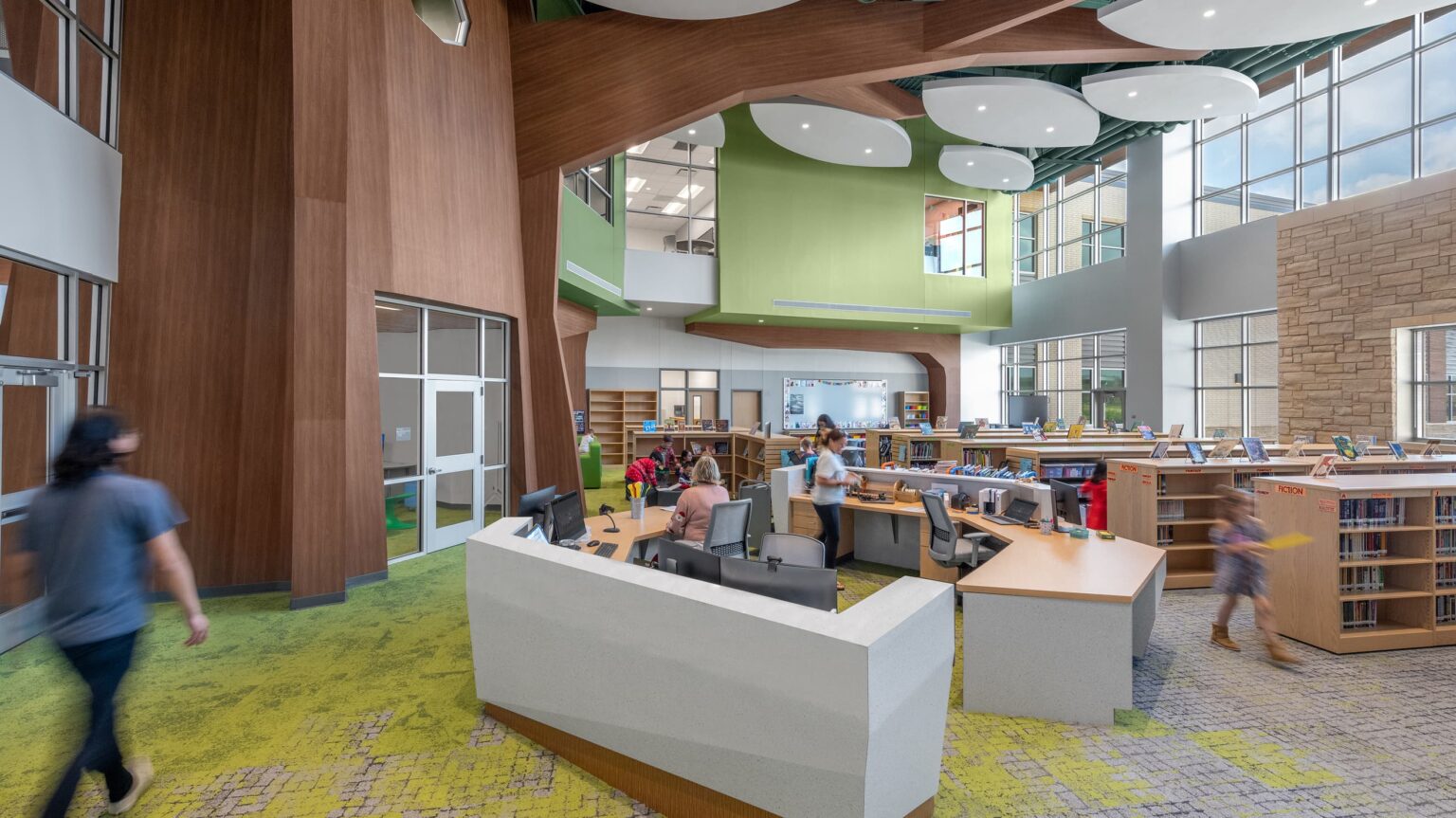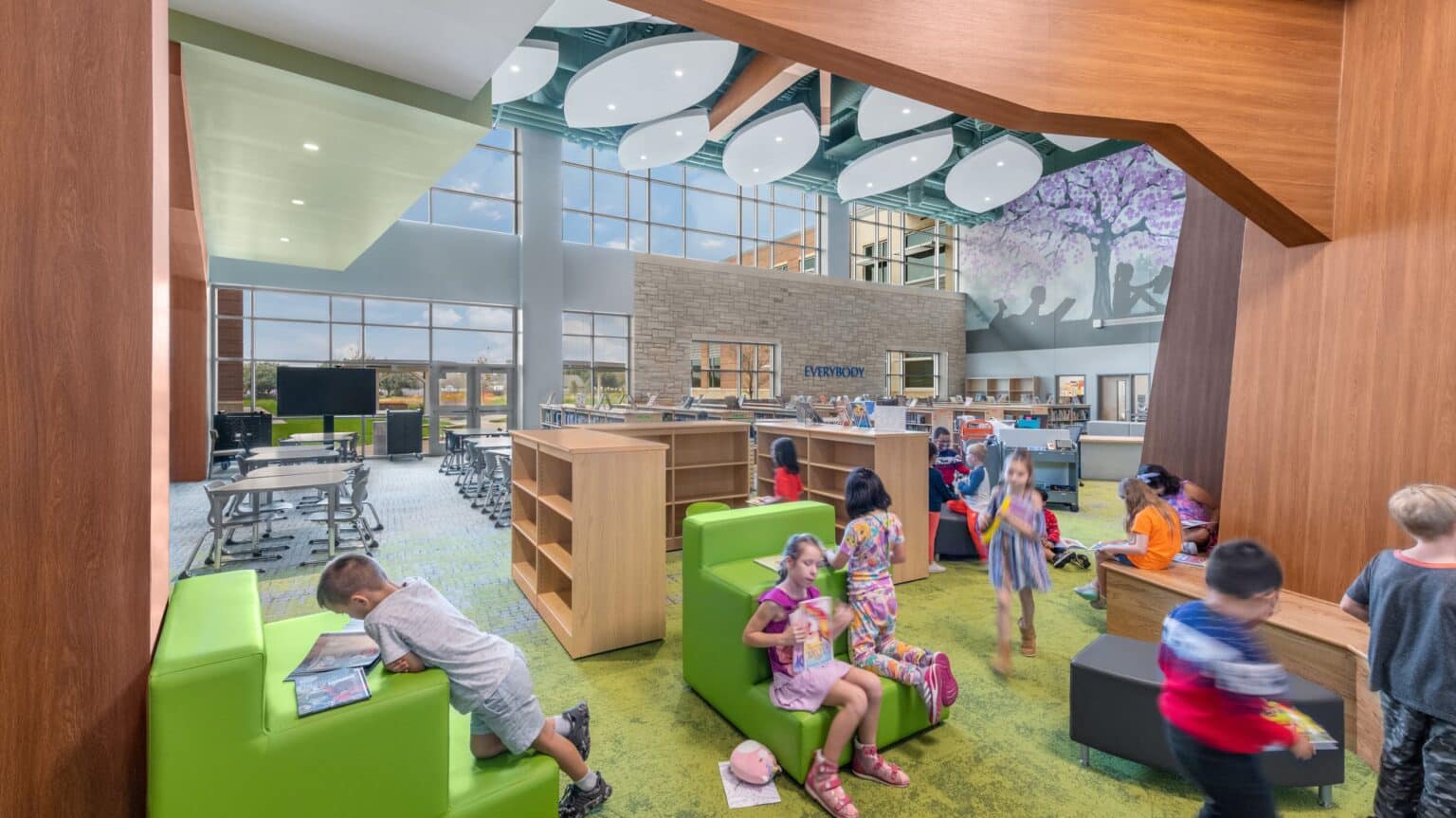Redbud Elementary School
Redbud Elementary School is a fitting name for a school designed around the concept of a magnificent tree.
Client: Round Rock Independent School District
Market: K-12 Education
Discipline: Architecture + Interiors
Project Area: 122,340 sq. ft.
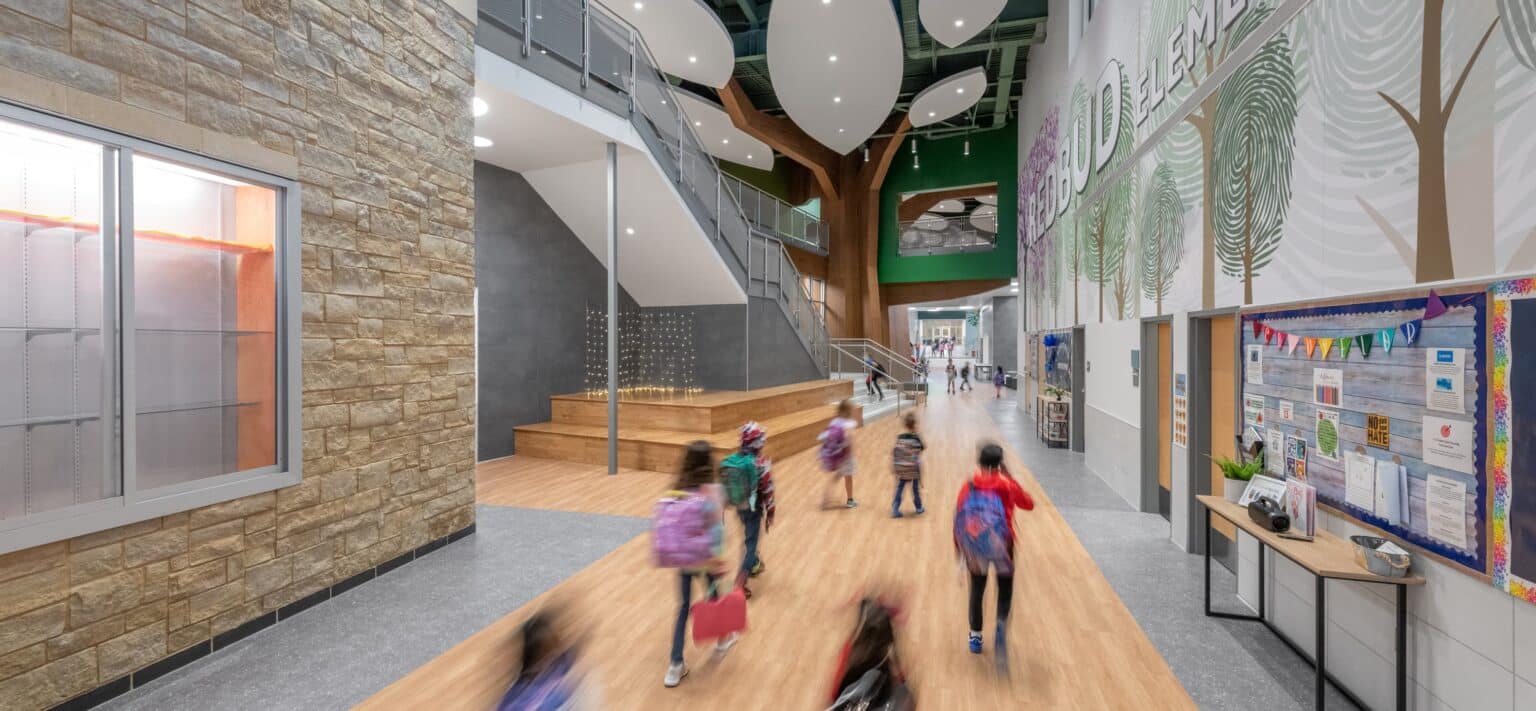
The Natural Experience
Redbud Elementary School is a fitting name for a school designed around the concept of a magnificent tree. Featuring organic forms, natural hues and abundant sunlight, the new Redbud Elementary School in Round Rock, Texas is designed with specific biophilic principles in mind and demonstrates potential ways in which beneficial aspects and forms of nature can be integrated into educational spaces. Biophilic design is woven throughout the school and creates a sense of calm, emotional safety, and wellness for the students while at the same time allowing them a sense of discovery and anticipation to explore and have fun while learning. Redbud Elementary was designed to inspire and bring joy to students. The nature-inspired design of the school was maintained from design conception through construction. The school’s 123,000 square feet serves 900 students in grades PreK-5 in a variety of fun and creative spaces. From the onset, students are introduced to the importance of the natural environment and its connection to their healthy development. Here, students relate to nature through abundant natural light, views to the outside, organic geometries, materials, and color selections.
The biophilic theme is incorporated into the design of the building in a variety of ways. The experience of the building and the biophilic design starts at the entry, with a roof resembling the wings of a playful butterfly landing to welcome the students as they enter the school. Upon entry symbolic references to nature are represented by patterns and textures in the materials and organic forms immerse the students in a natural-feeling environment and entices them to travel deeper into the school; the corridor mimics walking through the woods along a wood deck with grass and stone borders along its sides. Down the main spine of the school, a tree, with a broad base supporting progressively narrower, higher levels and a canopy of leaf-shaped ceiling clouds creates a sense of warmth and protection of being under the cover of a living organism.
It seems to me that the natural world is the greatest source of excitement; the greatest source of visual beauty; the greatest source of intellectual interest.
Frank Lloyd Wright
Nature of the Space
The school plays with light, space, and hierarchy to create both a sense of place and movement throughout the building. The orientation and flow of the school allow it to be flooded with natural light and numerous visual connections to the outdoors. The high ceilings and proportions of the main spine create a sense of spaciousness, where the focus becomes the natural forms of the ceiling clouds and the main tree located in the heart of the school. This lightness and wonder of the space contrast with the more intimate low ceiling classroom wings which helps to create a progressive hierarchy through the school. The shapes and forms throughout the school are inspired by nature, especially living organisms, and are imaginative and creative, rather than exact replicas of those encountered in the natural world.
All through the school, occupants can see colors that are prevalent in the natural world. Blue hues familiarize the students with clear skies, clean water, and even winter. After blue, green, the second most prevalent color in the natural world, a color we associate with forests, fields, fertile landscapes and suggestions of flowering plants, summer, and spring brings joy to the students. Green is a color we find comfortable to live with; scientists believe that, because our eyes, in daylight, detect wavelengths corresponding with the color green more readily than any other color, our brain and nervous systems feel calm when we look at green. Research has shown that we’re predisposed to like the natural greens associated with plant life and exposure to green spaces lifts our mood and sense of wellbeing. Earth tones that fill our natural landscape are also prevalent in the school. The gentle browns of the wood grains, the grays in the tiles, and stone and sandy hues are characteristic of the rocks, pebbles and woodlands found in nature.
Awards and Recognition
-
Learning By Design Magazine’s Fall 2022 Architectural & Interior Design Outstanding Project Award
-
2022-23 Exhibit of School Architecture Caudill Award
